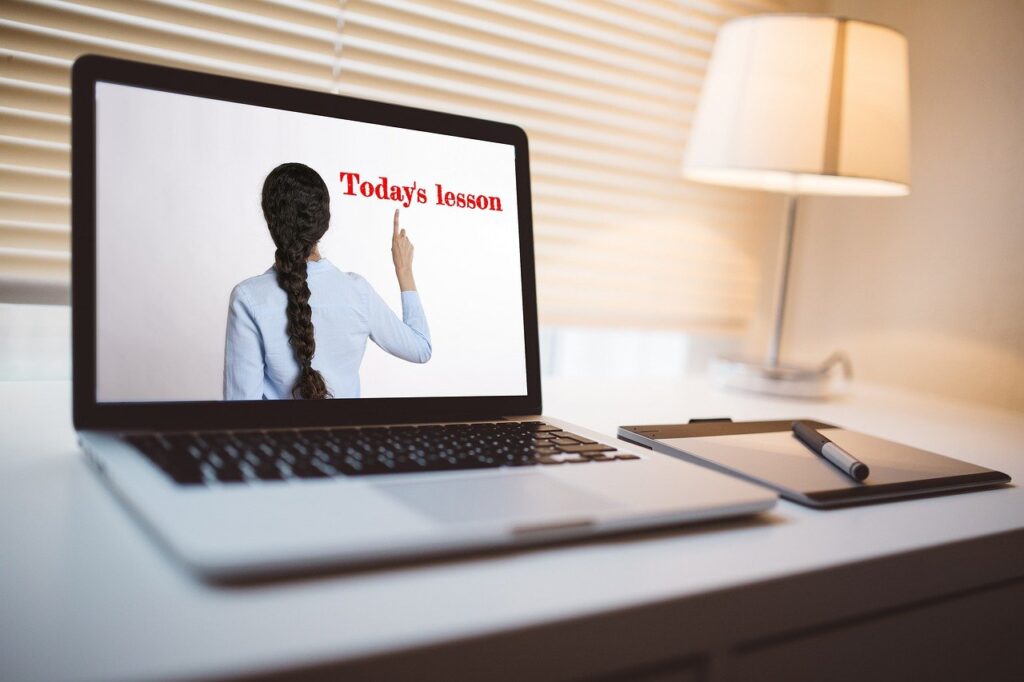
Picking A Great Topic For Your First Ecourse
Before you can begin creating your ecourse, you need to have an idea of the topic you are going to teach. Your ecourse will depend on what your audience wants, what you know about and feel at least a little passion for, and what is profitable.
If you’re not sure what topic you want, use the guide below to help you brainstorm.
- Identify your own interests and passions. Do you spend your weekends golfing, talk about golfing to everyone and often share tips with other golfers? Your e-course topic could be as simple as how to golf like a pro on an amateur’s time.
- Find a problem your audience has. Can you solve it? Is it something you can easily show someone else how to do? Is it something you can help them transform? For example, can you teach them how to transform their unhealthy eating habits into a healthy lifestyle?
- Look at your competition. What are they teaching? Can you teach it in a better way or more unique way? Is your competition teaching how to set up a general coaching business with the very basics of information? Can you teach how to set up a specific type of coaching course?
- Look at magazines.com for popular magazines in your area of interest. If a magazine is being published on the topic look at the headlines for ideas on a topic for your ecourse.
- Choose an evergreen topic in health and fitness, weight loss, relationships, travel, self-development, coaching, survival or preppers, hobbies like golf, fishing or knitting, cooking, make money online, starting a business, or finance.
There are a lot of ways to brainstorm you e-course topic. In the end, just pick a topic. Don’t spend so much time (or money) researching or you won’t get your course ready in less than a week.
Learning Mediums
Now that you have a topic, you need to choose the type of learning model you want to use. There are many types, but for our purposes we want to use ones that are quick and easy to put together. These can be:
- Videos
- Audios
- Written lessons
- Combination of different ones
Keep in mind people learn in different ways. It’s been shown that students are more likely to complete a course that appeals to their learning style. The different learning styles include:
- Verbal: Words using speech or writing.
- Visual: Images, pictures, videos
- Auditory: Sound, music
- Physical: Sense of touch using hands, body
- Solitary: Self-study, work alone
- Interpersonal: socializing, working in groups or others
- Logical: Systems, organization
All ecourses are hosted online but they are often taught in different ways. You can record videos or do screencasts or do live video classes. You can record audio lessons or use written lessons. Another option is to drip email the lessons.
The three main learning models for your ecourse lessons are video, audio and written content. The type you choose depends on different factors and what is right for you and your ecourse.
Video
With video your students are able to see visual elements such as images and written content mixed with your personality and presence. You can either be on-screen, which allows your viewers to connect and engage with you or you can do a screenshare where you show what you are teaching.
Video can be demanding and will need to be edited. It might not be a good choice if you’ve never done video. But if you have, video is a great way to teach your ecourse.
Video can be done in a variety of formats. One of the most common for ecourses is talking head videos. They are easy to film and allow the student to feel connected since they can see you (or a part of you). Screencasts, slides with voiceovers, and animated lessons are all options for video as well.
Audio
If your ecourse doesn’t require visual aids, you can present it through a podcast-style audio file. You can show your personality without having to be seen. All you need is a high-quality microphone and the software to record audio.
Written
For those of you uncomfortable being in front of a camera or microphone, the written course content is a good option.
You can create an email series sent out on a scheduled time. Create and upload PDF files or slide presentations for your audience to download. Make the ecourse more personal by including stories, your personality and images in your writing.
Combination
Use a mix of different media in your ecourse content. A combination of different styles allows you to introduce variety into your course that helps keep it interesting your students.
This can be as simple as using videos along with written content such as workbooks, slides, templates or PDF transcripts of your videos. Whichever style you choose also depends on how quickly you can create it or have it created.
If you to award successful completion of the ecourse or create more interaction with your students, you can include interactive quizzes, tests, written assignments to be turned in, surveys, or infographics
Be aware of what type of medium is appropriate for what you’re teaching. Some styles won’t work well with your topic i.e. audio only with a graphics rich topic like photography.

Collecting Course Content
Gathering your course content might seem like a daunting task, especially if you believe you have to create it from scratch. But there are easier and faster ways to collect the content for your ecourse. Of course, your number one goal for your ecourse should be good content that transforms or helps your customers in some way.
If you will be doing videos, you can use bullet and sub-bullet points to prompt you as you’re creating your video. In fact, when creating your video, you want to be as natural as you can so reading a script, word for word isn’t the best idea.
Here are some ideas to find good written content for your ecourse.
1. Purchase private label rights (PLR) content you can personalize and change to fit your audience, topic and needs. Private label rights content is pre-written content that allows you to make changes to the copy to use and claim as your own content.
Some PLR providers offer complete done-for-you course materials so all you have to do is personalize it.
Personalize it, add or take away content or reorder it to work for your course. Search online for PLR (your topic). There are a lot of PLR sellers out there and many of them offer poor quality content. Do your homework and actually read the content before you use it.
Here are a few that offer high quality PLR:
- ListMagnets.com
- WhiteLabelPerks.com
- PLRMiniMart.com
- Wordfeeder.com
- NicheStarterPacks.com
- ContentSparks.com
- Easy PLR.com
- CoachingPLRContent.com
- PLR.me
- AllPrivateLabelContent.com
- DFYTemplates.com
- InternetSlayers.com
- TribeBloom.com
- ToolsForMotivation.com
- PiggyMakesBank.com
- KitchenBloggers.com
2. Hire a ghostwriter/writer. Hire someone to create the content for you. You can find good writers by doing a search on Google or on sites like Upwork.com or Fiverr.com. A writer will cost you more than private label content but may be worth it to get the content you want. When hiring a writer, it’s a good idea to give them a copy of your outline with any ideas you have for the way you’ll be teaching the course. You can use sites like Fiverr to create content, videos, and graphics.
3. Repurpose your existing content as an online course. If you’ve already got a lot of content on your blog or you’ve used in your business, you may be able to repurpose some of it in your course You can turn your blog posts, workshops, webinars, trainings or Facebook lives into a course. Browse through your old (and newer) files to see what you can reuse. Tweak it if you need to so it works with what you are teaching. Repurposing content for an online course will save you a lot of time.
4. Curate content from others. Curated content is the process of adding your opinions or ideas and other value to a selection of other people’s content you find online or elsewhere.
Find the most suitable content from different sources that relates to your topic. Share only what is relevant to your learners. Don’t forget to add value to the content with your own input and commentary.
Content curation is a great way to build your authority. You’re bringing the information of others, their expertise, together in one place so your readers don’t have to go searching for it all over the internet. This helps you be seen as the go-to source for your audience about all things in your niche.
You can use tools to help you find curated content more easily.
- Buzzsumo.com
- Pocket.com
- Scoop.it
- Feedly.com
- Hootsuite.com
The idea of creating the content for your course might be intimidating or overwhelming. It doesn’t have to be though. I’ve shown you four ways you can get good quality content written for your course without having to write it from scratch yourself.
